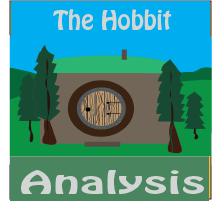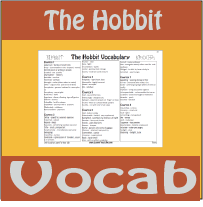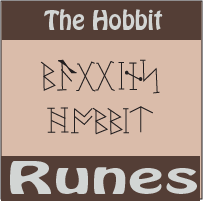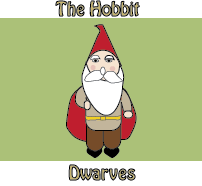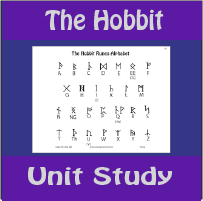Hobbit: Point of View
Tolkien used first person, second person, and third person point of view in The Hobbit.
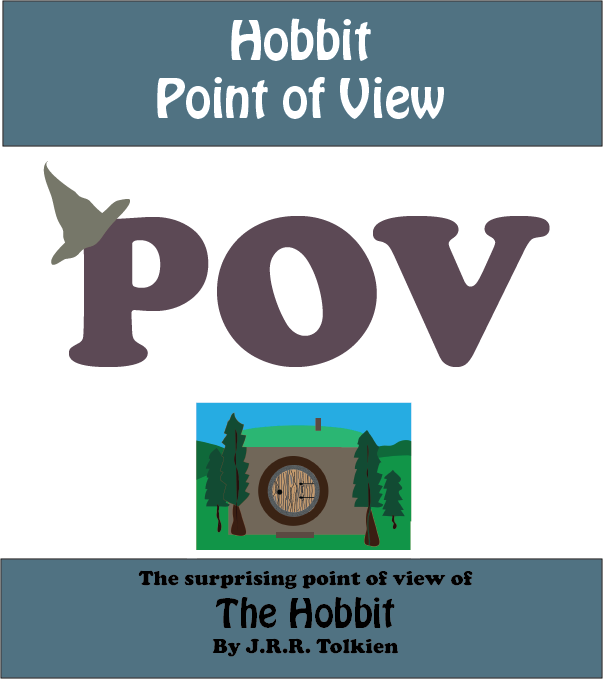
What Perspective is The Hobbit Written In?
Short Answer:The main story is the third person limited.
The story is layered, and the outer frame is a story-teller using second person point of view to engage his audience.
The story-teller/author does occasionally interject with a first person omniscient perspective as well.
To understand what that means, read further.
From The Hobbit Unit Study: Chapter 3
What point of view is The Hobbit written in? Before you decide, let’s do a quick recap.- 1st Person: Story told from the narrator’s perspective using “I” and “me”
- 2nd Person: Story written to the reader, using “you”
- 3rd Person: Story written about a character, using “he” or “she” or “they”
- Limited: The reader can see only what the main character sees and thinks
- Omniscient: The reader has a birds eye view, sees multiple perspectives and knows more than the main character.
Determining POV
First trick to determine POV: Read the first paragraph of the book.There’s no “I’s,” or “me’s,” or “you’s” to be found, so I think we could say we have found ourselves with a third person perspective. Now we just have to determine if it limited or omniscient.
If you are thinking it is 3rd person limited, you are in good company. The story does follow the thoughts, actions, and feelings of one particular hobbit - even starting with his genealogy. (Who does that in fiction?)
Incidents of 1st & 2nd Person
Perhaps you noticed that this particular, and rather-limited hobbit, was standing outside of his door in the sixth paragraph of the book, when along came Gandalf. Did you take note of the author’s tricky little literary dig when introducing the said Gandalf:If you had heard only a quarter of what I had heard about him, and I have only heard very little of all there is to hear, you would be prepared for any sort of remarkable tale.
Now if you ever decide to become a writer, you will be told that it is essential to pick your point of view and not change it. Changing point of view in a tale is like changing the details in a contract while it’s in effect. It’s cheating. Your readers won’t like it.Perhaps we could give Mr. Tolkien a little leeway here; after all it was his first published novel. But then, he was a professor of English and literature! We can’t let him off the hook based on presumed ignorance and inexperience.
At first glance, it appears that our esteemed professor and novelist is guilty of breaking the cardinal rule of point of view. If I was a prosecutor in a court of literary law, I would have to present these other infractions from the first few chapters of the book to you, the jury, for consideration:
If you have ever seen a dragon in a pinch, you will realize this was only poetical exaggeration applied to any hobbit. (Chapter 1, paragraph 81)
What his father, Bungo, would have thought of him I daren’t think. (Chapter 2, paragraph 23)
Yes, I am afraid trolls do behave like that, even those with only one head each. (Chapter 2, paragraph 44)
A really first class and legendary burglar would at this point have picked the trolls’ pockets - it is nearly always worth while, if you can manage it - pinched the mutton off the spits, purloined the beer, and walked off without their noticing him. (Same paragraph as above)
There were lots of clothes, too, hanging on the walls -- too small for trolls, I am afraid they belonged to victims. (Chapter 2, paragraph 110)
So they laughed and sang in the trees; and pretty fair nonsense I daresay you think it. Not that they would care; they would only laugh all the more if you told them so. (Chapter 3, paragraph 14.)

Analysis of Perspective
So just who gave this author permission to throw in some “you” and “I” statements in the middle of a third person perspective? And if we were to allow those few, scattered, isolated statements to change our point of view, would we decide he was writing in first or second?Before the jury debates, we have more evidence of POV impropriety to present.
Next charge: Using omniscient statements in a primarily limited point of view.
In the first chapter, when Bilbo shut the door on Gandalf, it stated the wizard scratched a queer sign on the door. You, the reader knew that, but our main character did not.
When Bilbo came upon the trolls, it states, “That would have been time for Bilbo to have left.” Who is making that judgment call? (Certainly Bilbo didn’t.)
Then when all the dwarves were tied up and our brave burglar was hiding in a tree it states, “It was just then that Gandalf came back, but no one saw him.” Who knew he was there, if no one saw him?
So, what does the jury say? Is Tolkien guilty of inconsistency in his point of view?
Before the jury debates, we need to hear from the defense on this case.
Layered Narrative
Tolkien has presented us with a layered narrative. It’s a little like watching a TV show and someone says, “What is that thing they have?” and you have to give an answer.We are watching the main narration: that is the story of this unexpected journey from the eyes of the hobbit. But almost imperceptible to us, a story-teller is telling us the story. We are so caught up in the tale, we barely notice our story teller’s presence.
For proof, let’s go back to that first paragraph:
- In a hole in the ground there lived a hobbit. (Straight forward enough)
- Not a nasty, dirty, wet hole (What you, the reader, might think, not what Bilbo thought.)
- Then, a description of the hobbit hole
- And a description of the hobbit himself
- Followed by the genealogy of said hobbit
I suppose hobbits need some description nowadays, since they have become rare and shy of the Big People, as they call us.
So what we have, and what Tolkien set out from the first paragraph to give us, is this:- A main narrative in third person limited perspective with Bilbo as the main character.
- An outer frame of second person, with the readers listening to a story-teller telling them a story in second person. (He invites you to share in his assessments.) This outer frame occasionally intrudes into our story.
- Partial omniscience is infrequently provided by the story teller, usually as a foreshadowing of something that will happen.
Foreshadowing: First Person Omniscient
The foreshadowing that we have seen up to now includes things like:- Gandalf’s sign on the door
- The repeated idea: “It’s not the last time Bilbo would wish that.”
What Else Is in the Hobbit Unit Study Guide?
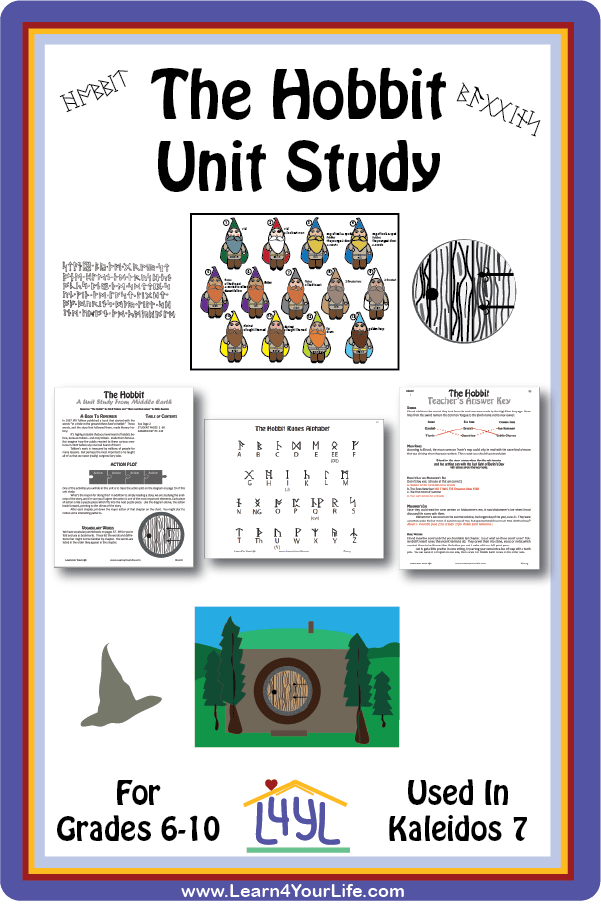
- Multiple Choice, Discussion, and Essay Questions
- Vocabulary Word Lists
- Analysis Symbolism, Themes, Genre
- Middle Earth Runes and worksheets to translate
- Projects and fun activities
Buy The Hobbit Unit Study
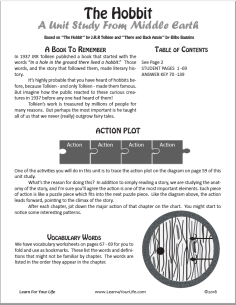
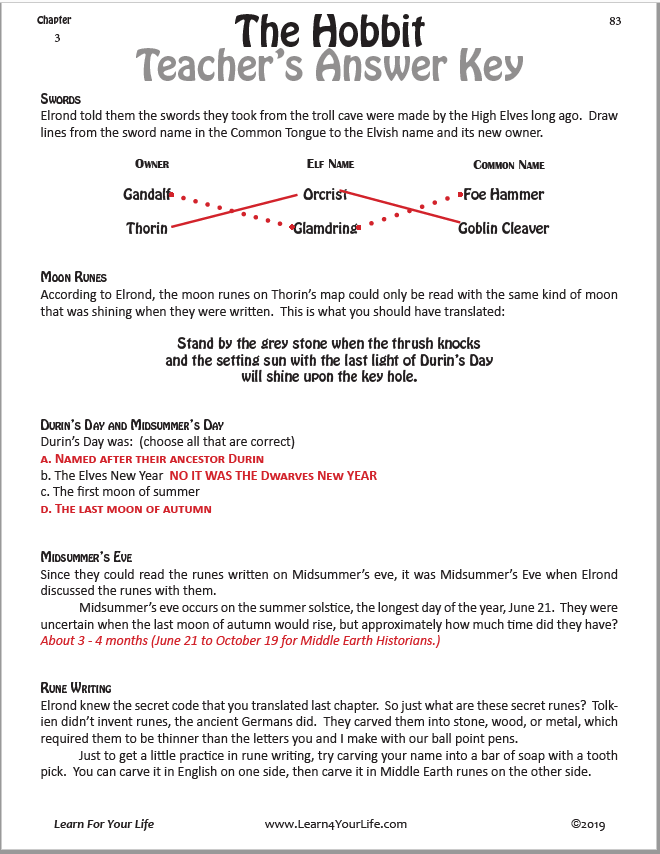
Student Study Guide AND Teacher's Answer Key Included
$2.99 Download - 136 pages
See below for contents of unit study
![]()
The Hobbit Pages
All of our Hobbit pages at a glance

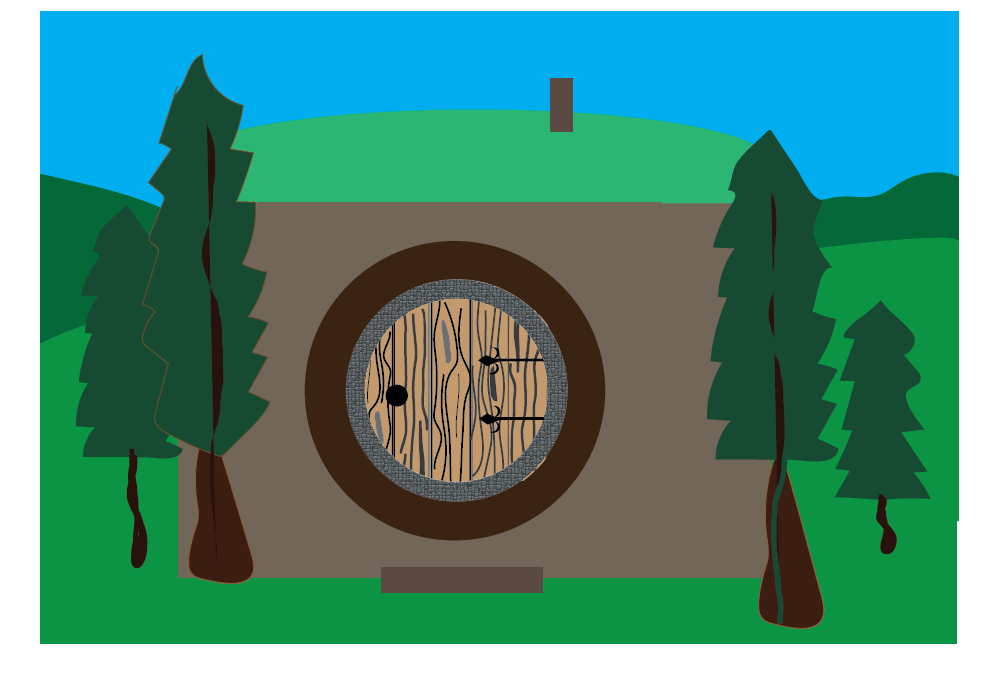

Hobbit: Point of View
About Our Site
Hands-On Learning



